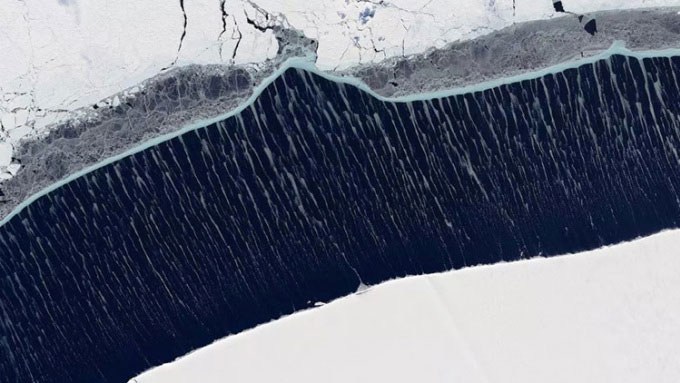Strong winds and unusual ocean currents have created a spectacular scene on the surface of the water between the Ronne Ice Shelf.

Beautiful ice ribbons forming on a water channel in the Ronne Ice Shelf. (Photo: NASA)
This stunning image was captured by the Landsat 8 satellite on November 20, but was only recently released by NASA’s Earth Observatory. It shows long ice ribbons that resemble strings connecting the two shores of the water channel between the Ronne Ice Shelf—a part of the main Antarctic Ice Sheet that produced the world’s largest iceberg, A-76, in May.
Sea ice is composed of both multiyear ice (white) and first-year ice, or young ice (gray). The latter typically lies much closer to the Ronne Ice Shelf, but in this image, strong winds have pushed it away. The wider distance allows for the formation of soft ice ribbons on the water channel.
Ice ribbons are essentially thin strips of sea ice less than 10 cm thick. They are formed from small ice crystals known as frazil. Normally, frazil crystals will bond together to form complete ice sheets covering the ocean surface, but in this case, strong winds and unusual ocean currents have prevented the sheet formation and pushed them to the opposite shore of the water channel, NASA explains.
However, researchers still do not fully understand why the ice ribbons at Ronne appear blue-white when viewed from space. Typically, glaciers and sea ice only display this coloration when they become dense enough to absorb longer light wavelengths and reflect only blue.
“I’m not sure how the thin ice ribbons here ended up blue, but they may have been compressed long enough to cause that effect,” speculated Walt Meier, an expert at the U.S. National Snow and Ice Data Center.
Meier further noted that this beautiful phenomenon may become more common in the future due to climate change, as sea ice becomes thinner and more fragile.


















































